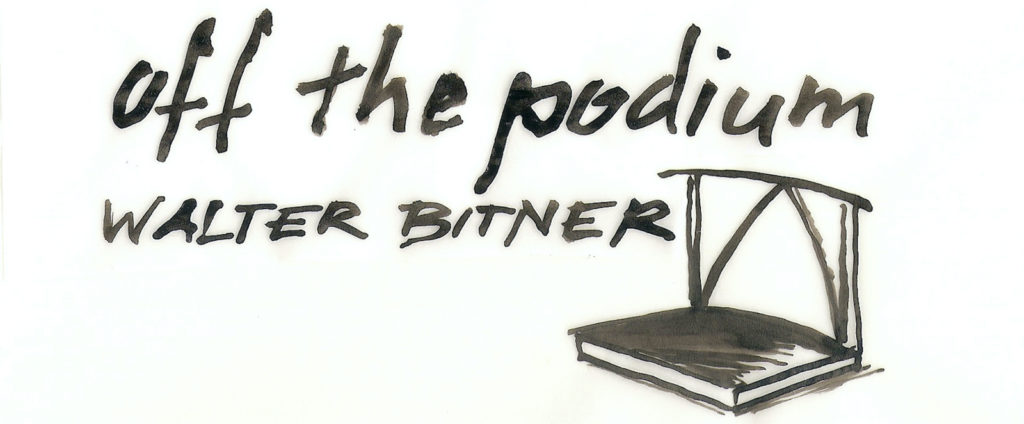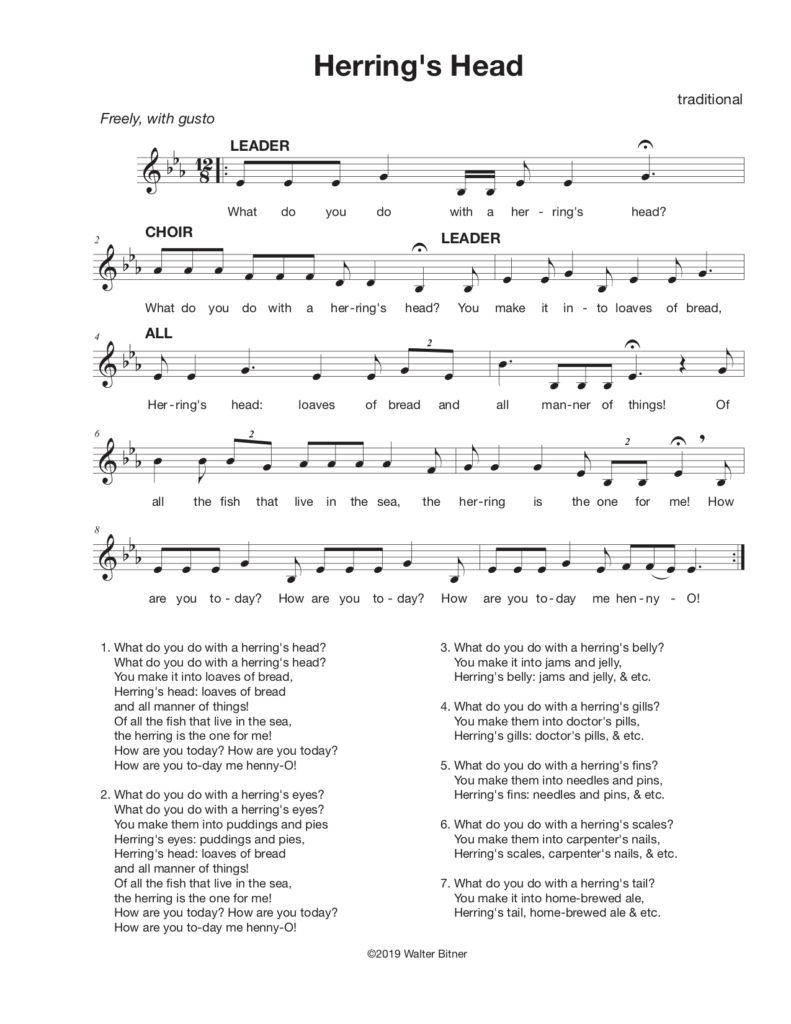

Herring’s Head is a cumulative folksong that I taught to and sung with students of all ages at many schools over the course of my teaching career. It features humorous lyrics that deliver a conservation message about whole animal or “nose to tail” eating (mindful consumption). Herring’s Head‘s call-and-response structure, extroverted attitude, and whimsy made it a popular and successful song to sing with large groups of children and adults.

The herring is a small forage fish (near the bottom of the food chain) found in large schools in both the north Atlantic and Pacific oceans, as well as other parts of the world. Herring has been a staple food source (for humans) for thousands of years! so it seems natural that there would be songs about them. They are eaten in a wide variety of ways – raw, fermented, pickled, salted – and are an important component of many traditional cuisines worldwide, and especially in northern Europe.
I have come across several versions of this song on the internet (often attributed as traditional to Scotland or the north of England), but I have not encountered any quite like the version I learned when I taught at Fieldston Outdoors in the early 1990s. Unfortunately I do not remember who I learned it from. This version is sung unaccompanied, and the beginning of each verse begins with a brief “call and response” between the leader and the choir or audience, after which everyone sings the remainder of the verse together. Like any cumulative song, each verse gets longer with addition of a new lyric (in this case another part of the fish), and a lot of the fun that ensues from its performance is from the challenge of remembering and singing the entire song correctly as each verse gets longer and longer.
Leader: What do you do with a herring’s head?
Choir: What do you do with a herring’s head?
Leader: You make it into loaves of bread,
All: Herring’s head: loaves of bread
and all manner of things!
Of all the fish that live in the sea,
the herring is the one for me!How are you today? How are you today?
How are you to-day me henny-O!
The leader’s initial call outlines the tonic major triad: What do you do with a herring’s head?, the choir responds back with the same question outlining the descending dominant seventh chord, and we’re off. With each successive verse a new measure is added (inserted after measure four of verse one) – that’s what makes this a “cumulative” song.

Herring’s Head PDF free to download, print, copy
I always taught this song by rote – in fact, I’ve never seen it notated before I made the version included in this article. I’ve tried to notate the rhythms as closely as possible to the way I learned and taught it. Besides the fact that this is an easy song children can learn to sing immediately (there’s really no need for them to look at notes for this one unless you are using it as an exercise for improving that skill), another reason to teach this by rote is the fact that there are gestures which accompany it.
I don’t actually know where the gestures came from – I think it was done this way at Fieldston Outdoors, but I might have made them up myself, or at least made up some of them.
I never actually taught these gestures – I just always performed them myself as I stood in front of the choir or the assembly and led the song. Inevitably, many or most of them would join me depending on the ages in the group and how well they knew the song.
Leader: What do you do with a herring’s head?
(point to your head)
Choir: What do you do with a herring’s head?
(listen to the choir)
Leader: You make it into loaves of bread,
(hold up both hands in front of you, palms up, as if you are holding a loaf of bread)
All: Herring’s head: loaves of bread
and all manner of things!
(raise both arms wide over your head with palms open and outstretched for “all”)
Of all the fish that live in the sea,
(stand with legs apart and hands in fists on hips – think Taras Bulba or Popeye)
the herring is the one for me!
(hold your hand in a fist and point to your heart with your extended thumb for “me”)
How are you today? How are you today?
How are you to-day me henny-O!
(shake the hands of those next to you or wave to others across the room)
Here are the gestures I used for the cumulative measures:
2. What do you do with a herring’s eyes?
(point to your eyes with the index fingers of both hands)
You make them into puddings and pies,
(rub your stomach)
3. What do you do with a herring’s belly?
(point to your stomach)
You make it into jams and jelly,
(mime holding a jar in one hand and eating from a spoon in the other)
4. What do you do with a herring’s gills?
(extend your neck and stroke it with your fingertips)
You make them into doctor’s pills,
(hold up thumb and index finger as if holding a small pill between them)
5. What do you do with a herring’s fins?
(elbows at your sides, flap your palms as if they were fins)
You make them into needles and pins,
(mime holding a piece of cloth in one hand and passing a needle through it with the other)
6. What do you do with a herring’s scales?
(scrape your arm with the backs of your fingers)
You make them into carpenter’s nails,
(mime holding a nail in one hand and hammering it with a hammer held in the other)
7. What do you do with a herring’s tail?
(hold your flat palm perpendicular to the floor and wave it as if it were a fish’s tail)
You make it into home-brewed ale,
(mime holding a mug of beer in your hand and swinging it in time in front of you)

What do you do with a herring’s guts?
What do you do with a herring’s guts?
You sell their guts to Pizza Huts,
Herring’s guts: Pizza Huts,
Herring’s tail: home-brewed ale,
Herring’s scales: carpenter’s nails,
Herring’s fins: needles and pins,
Herring’s gills: doctor’s pills,
Herring’s belly: jams and jelly
Herring’s eyes: puddings and pies,
Herring’s head: loaves of bread
and all manner of things!
Of all the fish that live in the sea,
the herring is the one for me!
How are you today? How are you today?
How are you to-day me henny-O!
©2019 Walter Bitner
Walter Bitner is a multi-instrumentalist, singer, conductor, and teacher, and serves as Director of Education & Community Engagement for the Richmond Symphony in Richmond, Virginia. His column Off The Podium is featured in Choral Director magazine, and he writes about music and education on his website Off The Podium at walterbitner.com.


Leave a Reply
You must be logged in to post a comment.